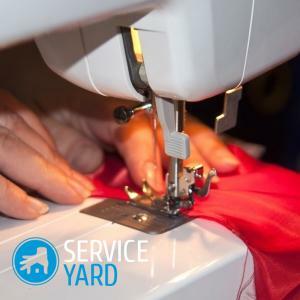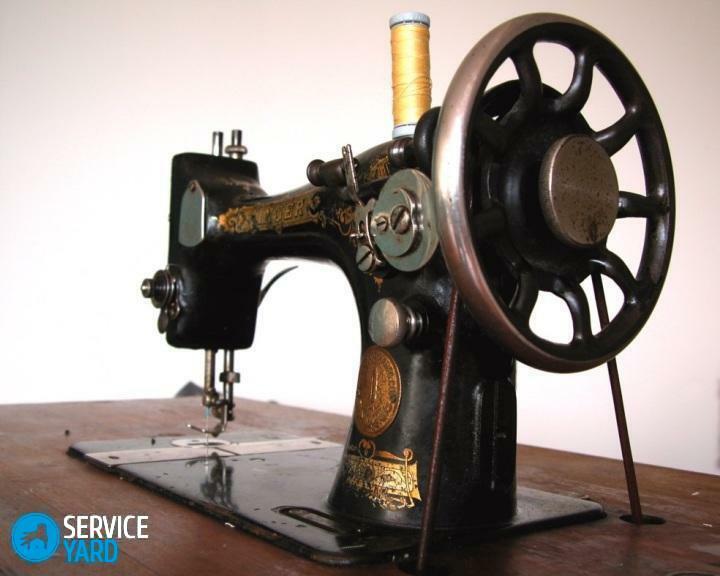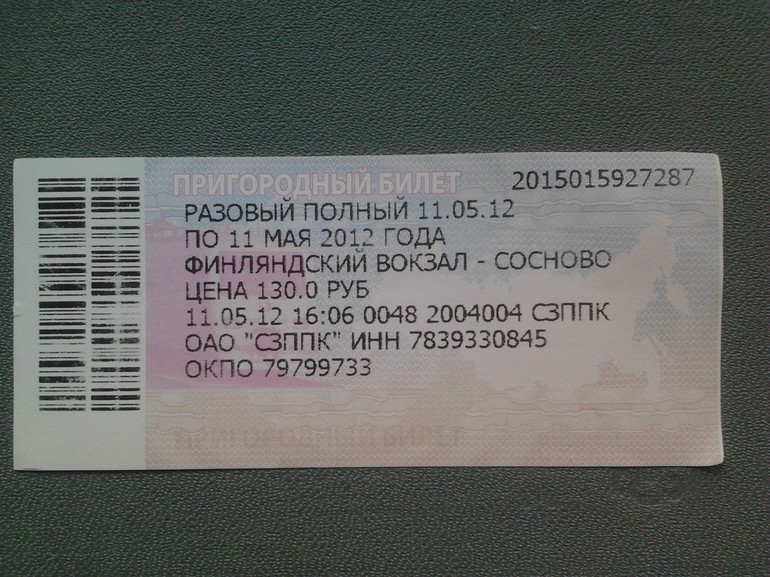
- Basic rules for operating the sewing machine
- How to understand that the sewing machine needs the necessary repairs?
- Problems with the
- How can I repair the sewing machine by myself?
- Lubrication of the sewing machine
- Repair of sewing machines( zigzag) of the Seagull type
Very often when the sewing machine operation rules are violated or the basic settings are not observed, this equipment breaks down. Most often, the main reason for such trouble is the use of fabrics that are not designed for the chosen model of sewing equipment. That's why sometimes you can repair the problem areas yourself without the help of experienced specialists. In this article we will consider the repair of sewing machines with our own hands, we will determine the most problem areas and the basic rules of operation in order to avoid all possible problems in the future.
to the contents ↑Basic rules for operating the
sewing machine The basic operating instructions will help you to use such equipment for a long time at home without having to repair the sewing machine:
- Sewing equipment must be located in a room with a dry microclimate, away from heating appliances.
- The correct selection of sewing needles and appropriate thread thicknesses is necessary.
- Getting Started, the sewing needle and the yarn guide must be set to the top position.
- It is necessary in the sewing process to help the sewing machine to delay the advancement of the fabric by hand, otherwise problems arise with the needle.
- When finished with the fabric, it is necessary to raise the presser foot, pull out the material and cut the working thread at a distance of 6-8 mm. Then you need to fix the presser foot with the needle in the lower position, first putting a piece of cloth under the foot.
How to understand that the sewing machine needed repairs?
With a serious breakdown can only cope with a highly qualified master, but you can solve the problem yourself, as often you only need to adjust the optimal tension force of the thread or make the correct installation of the needle relative to the shuttle.
Basic parameters that indicate the necessary repair of the sewing machine:
- instability of the stitch( presence of blanks in the line, break of the lower or upper thread, different lengths);
- the process of stitching occurs with violations( contraction of the working material in the "accordion", too strong or weak tightening of the thread in the stitch);
- the stable course of the sewing machine is broken( a heavy stroke, there is a strong noise in the process of work, there is a sudden jamming or breakage of the working needle).
All these factors indicate the need to inspect the sewing machine and repair problem areas.
to the contents ↑Problems with the operation of
Negligence towards recommendations, as well as poor-quality materials, contribute to various problems in the operation of sewing equipment. Consider the most common problems and possible solutions:
- Interruption of the upper thread indicates incorrect installation of the needle or misalignment of thread and needle numbers. Having a bent needle or a tightly stretched thread can also create this problem.
- A break in the bottom thread indicates a defective winding of the thread in the bobbin or the presence of burrs. The presence of loops indicates the tension of the thread or the misalignment of the needle and thread number.
- When sewing, the fabric does not advance. First of all, it is necessary to check the position of the teeth. They can not be either greatly omitted or strongly raised. In addition, the dust under the needle plate can also cause this problem.
- The sewing process is accompanied by the cutting of the material. To solve this problem, you need to check the needle for compliance with the selected thread and how correctly it is installed. Reducing the pressure of the presser foot can often solve this problem. In addition, the cutting of the tissue occurs due to the presence of barbs on the teeth.
- The heavy duty of the sewing machine is due to poorly lubricated equipment. It should be taken into account that a very high temperature in the room contributes to the thickening of the lubricant.
- During sewing process, the sewing machine suddenly stops braking. The reason can be in the multiple winding of the working thread in the area of the hub and flywheel.
How to repair the sewing machine by yourself?
Before starting the self-repair of the sewing machine, it is necessary to carefully inspect the working needle and the shuttle, and also to adjust the manual settings in order to avoid trouble. Usually these actions are sufficient for the resumption of normal operation of sewing equipment.
Important! Timely cleaning and lubrication of parts will help prevent the occurrence of most troubles and allow less frequent repairs of the sewing machine.
Unstable stitch
This problem can be caused by such factors:
- the nose of the shuttle is blunted;
- loosened the needles;
- the selected needles are too thick for the fabric;
- wrong ratio of needle and thread sizes;
- incorrectly inserted the needle;
- the working needle is defective.
To check the bending of the used needle, it is necessary to carefully inspect it using a magnifying glass. If, as a result of the check, the needle is found to be damaged, then this element must be replaced. This process must be carried out very carefully, because the wrong position of the needle can cause the thread to break.
Important! In most sewing machines, the needle is placed so that the sawn side of the flask is placed in the opposite position from the seamstress, and the thread groove is just on its side.
Due to the strong tension of the threads or their contact with the rough surface, a breakage of the threads may occur during operation. In this case, it is necessary to carefully inspect the shuttle, and in case of irregularities, it is necessary to level them with fine sandpaper or a polishing file. Such a repair of the sewing machine should be done very carefully, so as not to create new scratches.
Performing a stitch with violations of
Depending on the type of stitch violation, a variety of actions are taken to eliminate them:
- If there is a tightening of the fabric in the "accordion", the problem lies in the different work of the needle and the device that moves the fabric. To check this parameter, you need to pay attention to the process of the denticles. They should almost completely hide under the plate at the time when the needle is almost close to the plate.
Important! It is not recommended to solve this problem on your own, so it's better to ask an experienced specialist for help.
- The tightening of the stitch is caused by too much pulling the upper thread or by weakly pressing the presser foot onto the fabric. In this case, it is necessary to correctly adjust the pressure and tension of the threads. This problem can also occur due to the wear of the rake teeth or the smooth surface of the foot.
- The stitching of the stitch is caused by the excessive arrival of the upper thread. To solve such a problem it is necessary to adjust the running parameters of the shuttle or to get rid of irregularities on the parts that are used to pass the upper thread. Such a repair of the sewing machine will restore its normal functioning.
Disturbances in the stable stroke of the
There are several reasons that violate the stable stroke of the needle and cause the need to repair the sewing machine:
- The sewing process is accompanied by a difficult move. This problem can arise due to unsatisfactory lubrication of the parts surfaces, weak tension of the electric drive belt or clogging of the shuttle mechanism with sewing garbage.
- Prolonged simple sewing equipment causes jamming during the sewing process. If the sewing machine has not been used for a long time, it is necessary to use engine oil and grease all parts before starting work. With the idling run, oil will be distributed to all parts, ensuring a smooth running.
- The needle may not be correctly matched. For each type of tissue there is a certain number of needles. Otherwise, if the thickness is incorrectly chosen, the needle may break. In addition, you need to accurately install the needle, so that there are no displacements, no distortions during fixing.
Important! It is necessary to use only high-quality engine oil, since an unsuitable oil can form an adhesive mixture on the surface of the parts that resembles glue. In this case, the details of the mechanism are not able to function smoothly, as a result - they inhibit the stable course of the sewing equipment.
Serious problem - knocking of the sewing machine
When using the sewing machine, all of the above problems are easily eliminated. But sometimes more serious problems arise, for the solution of which you need to know the design of this equipment or you need to contact a professional specialist. One of the widespread problems is the characteristic knocking of a sewing machine. The resulting gap between the surfaces of the bushes of the main shaft arrangement indicates a characteristic knock.
To repair the sewing machine, it is necessary to perform the following actions:
- If there is a manual drive in the sewing machine, it is removed.
- With a special L-shaped screwdriver, the restrictive screw from the nut is twisted.
- The flywheel is removed, then the cone bobbin.
- Remove the bushing from the main shaft assembly.
- The sheet washer is mounted on the shaft unit. From a tin can, you can cut this washer yourself if there is no original spare part at hand.
- Then the reverse assembly of the mechanism is carried out, and the mutual position of the bobbin and bushing must be strictly observed.
- The shaft rotation is checked. If in the given process it is necessary to exert some effort, it is impossible to deepen the bobbin.
- The remains of the tin washer are cut.
Important! Usually one tin washer is enough, but there are cases when it is necessary to use several washers to eliminate the gap.
The cause of the knocking in the sewing machine can also be the impacts of the rack bar against the needle plate. To eliminate this problem, you only need to turn the rail 180 degrees. 
Needle - the key element of
The sewing needle operation cycle is measured by the number of punctures, with the blunt point becoming dull over time, which causes the working needle to bend. That is why very often to repair a sewing machine you just need to make a replacement for this device, since it is useless to repair the needle.
Important! Replace needles with extreme care, since the performance of the sewing machine directly depends on the needle.
The correct position of the needle in the needle bar is the situation when its blade is on the side of the shuttle and firmly secured. There should be a complete absence of minor swaying of this part and various backlashes.
Important! When choosing a needle, you need to take into account the type of fabric, because the properly selected point greatly simplifies the process of passing the thread through the fabric, and prevents the appearance of undesirable blanks in the line.
Attachment of needle bar and tensioner
Very often, the upper thread causes a malfunction. The main problems that arise and require repair of the sewing machine:
- A poor quality fastening of the tension regulator helps to break the thread, uneven stitch, loop and skip stitch. The screwed screw presses against the body made of plastic, so after a while the tensioner begins to stagger or completely falls out of the body of the sewing machine.
- When sewing fabrics with a coarse-fibrous structure, intersecting seams of leather products or when sewing a jeans bottom, the needle bar device moves to the upper point along with the needle. To return it to its original position, loosen the screw and adjust the position of the needle bar. The groove and blade must be in the correct direction with respect to the shuttle.
Setting the interaction of the hook nose and needle
The parameters of the shuttle and needle interaction affect the quality of the sewing machine. Failure to comply with these standards can lead to a variety of stitching defects, for example, skipping, breaking the lower or upper thread, looping. That is why when working with a sewing machine it is very important to adjust the correct distance between the nose of the hook and the needle, as these details must not touch.
Important: Normally, the distance should be between 0.1 and 0.5 mm, but remember that wider restrictions on needle travel require a longer distance.
How to adjust and repair the sewing machine:
- The shuttle's nose should almost close( 0.15 mm) close to the needle edge at the moment of its raising by 1.8-2.0 mm and be higher than the needle eye by 1.5 mm. These values are indicative during the adjustment of the shuttle stitch, but vary depending on the type of fabric and thread.
- If you make an incorrect setting with a negative offset, then during the operation the needle will constantly beat against the shuttle and gradually become blunted. This error is not always easy to notice, because the process of sewing machine is very noisy. To eliminate this problem, we need foil. It must be bent into several layers and in the right area, put under the hook, while tilting the assembly of parts in the right direction.
- If the needle and shuttle are absolutely incorrectly positioned relative to each other, repair immediately in accordance with the regulations. Otherwise, the sewing machine will not function properly.
Important! The quality of the shuttle stitch is influenced by the rail, the presser foot, the upper thread tensioner, the bobbin, the compensation spring, and other work units and parts.
to the table of contents ↑Lubrication of the sewing machine
Each sewing machine has a technical passport that indicates how to care for this equipment. Since the sewing machine has a lot of moving parts, they must be periodically lubricated.
Important! On the body there are special holes for lubrication, and a sewing machine includes an oiler with an elongated tip. If the instructions do not indicate the amount of lubricant, then it is enough to drop once into the hole on the body.
The technical data sheet describes the permissible lubricants, and here are the most common:
- For the lubrication procedure, you can use ordinary vaseline oil, which contains a component of refined oil. Due to its composition, this remedy is widely used in cosmetics, medicine, food industry.
- Mineral oil can also be used for the lubrication process. If it is necessary to switch to synthetic lubrication, first of all, it is necessary to cleanse the old grease, otherwise - the most unintended consequences may occur.
- For older hand-held sewing machine models, it is possible to use gasoline as a lubricant.
Important! Modern models have a plastic housing, so a special quality product is needed that will not be harmful to polymer compounds.
In manual sewing machines, it is recommended to lubricate the surface of the parts every time, not once every six months, as some sources advise. The procedure for lubricating the surfaces of parts contributes to an increase in wear resistance of the motor, which accounts for the main load. Increasing the service life of sewing equipment directly depends on the quality of the lubrication process.
Important! When switching to another lubricant, it is very difficult sometimes to eliminate the effects of the previous lubricant, so it is desirable to constantly use the same quality product for lubricating parts.
to content ↑Repair of sewing machines( zigzag) type Chayka
Most often, the repair of the sewing machine "Seagull" is not due to the breakdown of individual parts, but due to misalignment of the interaction between some units of this device.
The most common problems and solutions:
- Threading in a line. The main reason is the uneven tension of the working thread, which is due to the rusty foot of the foot, the broken compensation spring or the incorrect installation of the shuttle stroke.
- There is no winding of the bottom thread on the bobbin - to solve this problem you just need to replace the metal bobbin with a plastic bobbin.
- Problems with the shuttle - first you need to check the spout of this part for chipped and rusty spots. If there are any, then it is necessary to remove them with the help of a small nail file, and then carefully polish it. This process should be done extremely carefully, so as not to accidentally blunt the tip of the shuttle spout.
- Poor adjustment of the upper thread - it is necessary to check whether there is no tension between the plates of the stripper from the threads, since they do not allow the washers to fully contract.
Now you know the main points about repairing sewing machines and most of the problems can be eliminated by yourself at home. The main thing - at any malfunction to act very carefully, so as not to damage the fragile details of the equipment even more.



